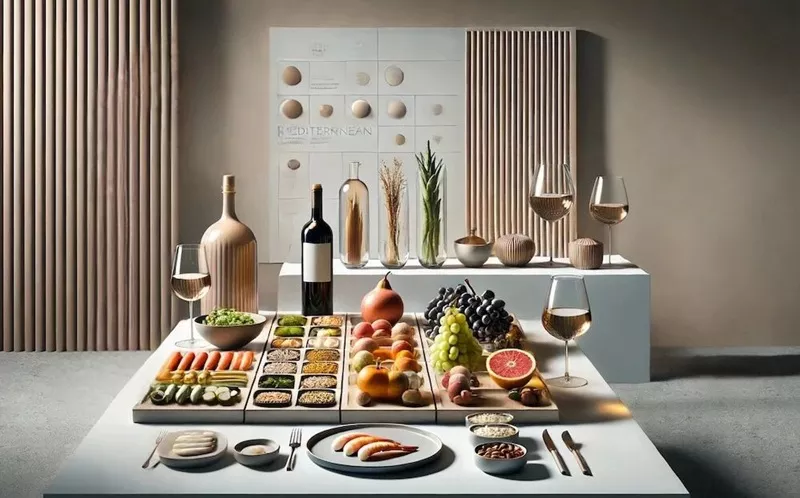On the eve of the ProWein International Wine Exhibition, the 2025 Meininger Wine Conference grandly opened. This grand event, with the core theme of “promoting wine sales” and focusing on the future development of the industry, has attracted high attention from practitioners around the world. During the conference, 12 renowned market research experts delivered speeches, covering a wide range of topics from attracting new consumer groups to exploring new markets, and conducted comprehensive and in-depth discussions.
The industry’s cold spell will recover in time
Burkard Neisin, vice president of beverage research at Rabobank, began the conversation with a chart: Over the past 55 years, the wine consumption curves in Portugal, Spain, France and Italy have continued to decline. Today’s consumption is only half of that in 1970, while the population has increased by 30% during the same period. The US market once relied on exports to double its size, but as early as ten years ago, its export growth had already stagnated. Neisin stated directly that the stable period after the 2008 financial crisis took a sharp downturn in 2017. “At present, what we are facing is a structural recession, not cyclical fluctuations.”
To break the deadlock, Neisin takes everyone back to the 1980s – the period of the last major consumer recession. In 1985, The New York Times declared that “a new era of prohibition has arrived”. In 1991, it was asserted again that “alcohol culture has undergone a fundamental transformation”. These historical situations are strikingly similar to the present: the shrinking of the main consumer group, stricter regulation, and the impact of health problems. Today, from health management trends to warnings about the carcinogenic risks of alcohol, the wine industry is facing structural challenges similar to those in history.
However, history also provides solutions. Neixin changed the subject and pointed out that in the 1980s, the spirits industry staged a comeback by lifting the advertising ban. “Digital marketing at that time was just like TV commercials today, a low-cost and high-penetration breakthrough tool.” He reminded practitioners: “Rather than being trapped in the macro trends that cannot be changed, it is better to focus on the levers of change that are within reach.”
The core reason for the decline in consumption
Christian Miller, the research director of the Wine Market Council (WMC) of the United States, has provided ideas for markets with similar current situations such as the United Kingdom and Canada by analyzing the historical fluctuations of the US market.
He pointed out that the classic table wines of the 1960s and 1970s sparked the first wave of popularity. From the early 1990s to the early 21st century, wine experienced an “extraordinary growth period”, with its growth rate far exceeding that of other beverage categories. However, from 2016 to 2018, the market tended to stabilize and began to decline.
The second wave of enthusiasm originated from the revolutionary change of American food culture. Miller explained, “Categories such as coffee, cheese, and olive oil are all showing a trend of high-end development, and wine is also taking advantage of this trend.” On the contrary, in the 1980s, the beer industry simplified its product lines and downplayed flavors, resulting in a significant loss of market share. At that time, the baby boom generation was entering the golden period of consumption, and the media’s positive coverage of wine also played a significant role: from the well-known “French Paradox” to the news about the Mediterranean lifestyle and the benefits of wine for cardiovascular health. Meanwhile, from 2004 to 2015, the number of retail licenses for alcoholic beverages in the United States increased by 37%, and high-income and highly educated groups became the main consumers.
Be authentic & eco-friendly
Dr. Stephanie Lampoff, the head of business development for the consumer market industry in Europe, the Middle East and Africa at PWC, introduced three Gen Z opinion leaders – Charlie Damelo, Emma Chamberlain and Molly May Hag. The audience on site knew almost nothing about their social media accounts. These three Internet celebrities have over 66 million followers on Instagram and have become popular respectively through dance videos, daily life sharing and beauty and fashion content. To understand this generation, one must delve into social media. Rumpoff pointed out that the five major characteristics of Generation Z stem from: the supremacy of social media and mobile devices, climate change and environmental actions, the COVID-19 pandemic, gender equality and inclusion, and economic and political uncertainties.
They demand immediate access to information and immediate satisfaction. Rumpoff gave an example, saying that users would be lost if a web page loaded for more than 15 seconds. 73% of consumers discover brands through social media, 52% shop under the influence of Internet celebrities, and half complete transactions directly on social platforms. With the landing of TikTok shop in Europe, this has become a key channel.
Despite the high economic pressure, Generation Z is willing to pay a premium for high-quality life products – 60% of Generation Z consumers spend more on beauty, fashion and health than other generations, and they have high brand loyalty. Only 35% of Gen Z consumers are willing to try new brands with better cost performance, which is much lower than the 50% of other generations.
Rumpoff concluded by taking three Internet celebrities who transformed influence into business empires as examples: “To reach this generation, it is necessary to take root in social media.” As many speakers have repeatedly emphasized – rather than regarding young people as research subjects, it is better to incorporate them into the team.
Related Topics


